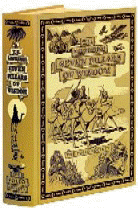|
Opinion- 22 August 2007 |
|
Peter Hall*: Comparing Four Pillars of Wisdom |
 An
article in Science1 last July reported a fascinating analysis
of the impact of high-school science and mathematics training on undergraduate
performance in science courses. Using standard statistical methods based on
regression, the authors assessed the extent to which the level of biology,
chemistry, physics or mathematics, taken in high school, allowed reliable
prediction of performance in the first three of these subjects at an
undergraduate level. High-school attainment in the three science subjects was
measured on a three-point scale (zero, one or two years of study); in the case
of mathematics the scale had four points (algebra II or lower, precalculus,
calculus or Advanced Placement2 calculus). Undergraduate performance
was judged in terms of the grades achieved.
An
article in Science1 last July reported a fascinating analysis
of the impact of high-school science and mathematics training on undergraduate
performance in science courses. Using standard statistical methods based on
regression, the authors assessed the extent to which the level of biology,
chemistry, physics or mathematics, taken in high school, allowed reliable
prediction of performance in the first three of these subjects at an
undergraduate level. High-school attainment in the three science subjects was
measured on a three-point scale (zero, one or two years of study); in the case
of mathematics the scale had four points (algebra II or lower, precalculus,
calculus or Advanced Placement2 calculus). Undergraduate performance
was judged in terms of the grades achieved.
Unsurprisingly, the level of high-school training in biology, chemistry and
physics was a good predictor of college or university performance in those
respective subjects. However, it was less expected to find that there was no
significant crossdisciplinary effect in the sciences. That is, while a high
level of high-school training in biology, chemistry or physics clearly gave
students an edge at college or university, the advantage was essentially limited
to the respective subject. In particular, taking extra physics at high school
didn’t really help to improve college or university grades in chemistry, and
vice versa.
On the other hand, taking extra mathematics at high school gave students an
advantage across all science subjects, “including college biology, a discipline
not traditionally associated with strong mathematics preparation,” to quote the
Science study. The study went on to conclude that “the two pillars
supporting college science appear to be study in the same science subject and
more advanced study of mathematics in high school.”
These observations resonate with the experiences of many Australian students,
and not just those at high school. Gus Nossal once advised university students
to “Do as much mathematics and statistics as you can in your degrees — these
skills will empower your professional lives.” However, for a country like
Australia, which has chronically run down its capacity for teaching mathematics
in schools3, the Science study identifies major challenges for the
future.
References
1Sadler,
P.M. & Tai, R.H. (2007). The two high-school pillars supporting college
science. Science vol. 317, 457–8.
2The
Advanced Placement program allows North American high-school students to
take courses at college level. To this end, it offers relatively advanced
courses, and exams, at high schools in the US and Canada.
3See e.g. the 2007 Productivity Commission Review on “Public Support for Science and Innovation,” which in several places noted the nation’s shortage of mathematics teachers; or the 2006 Australian Council of Deans of Science study, which observed that “Three in four schools reported difficulties recruiting suitably qualified mathematics teachers”; or the 2006 “National Strategic Review of Mathematical Sciences Research in Australia,” which reported that “Increasingly, high school mathematics is being taught by teachers with inadequate mathematical training.”
*Peter Hall is Professor in the Department of Mathematics and Statistics at the University of Melbourne. He is the current president of the Australian Mathematical Society.